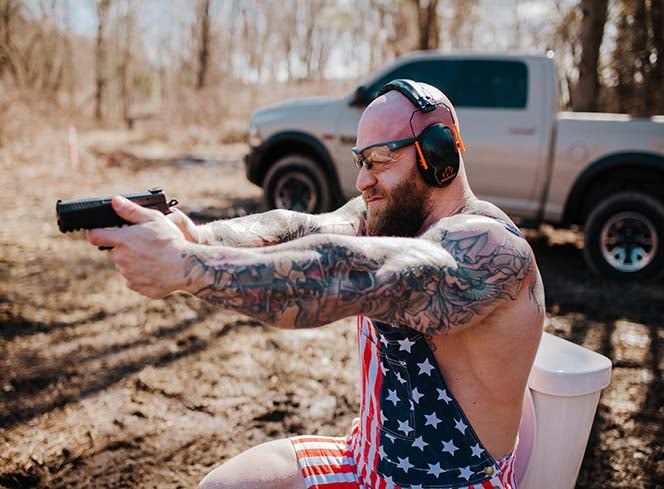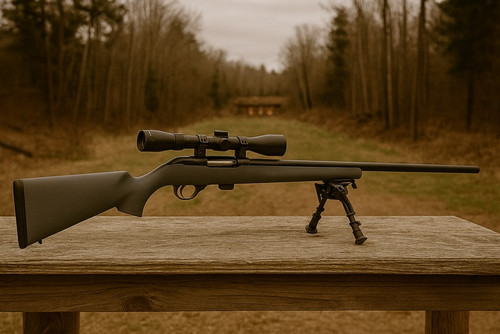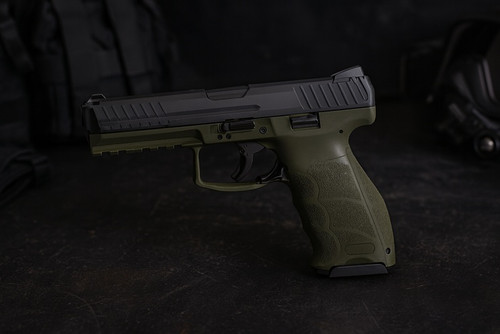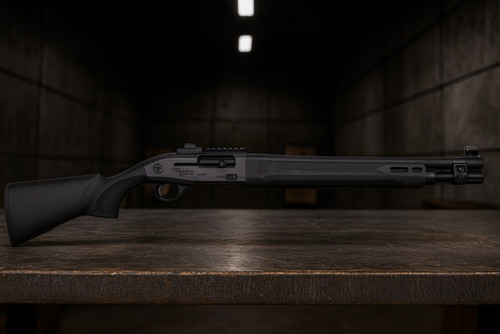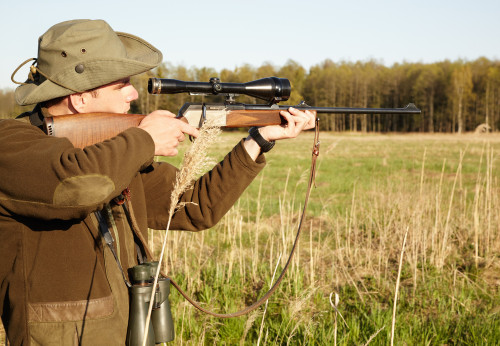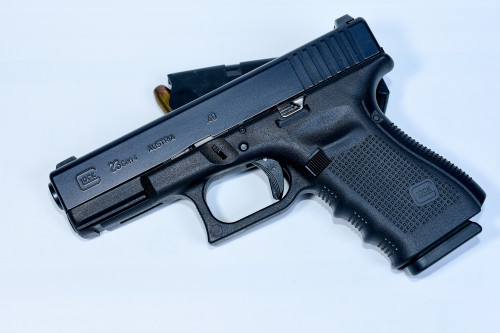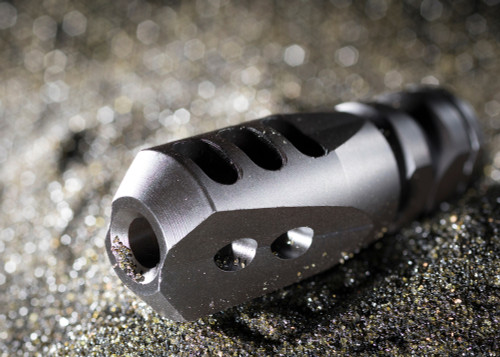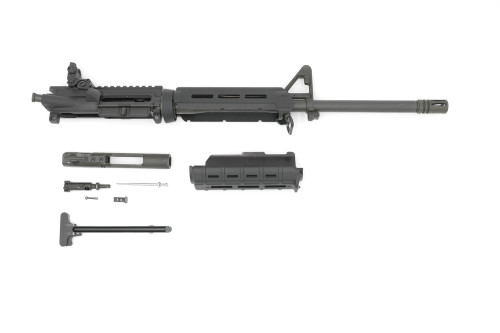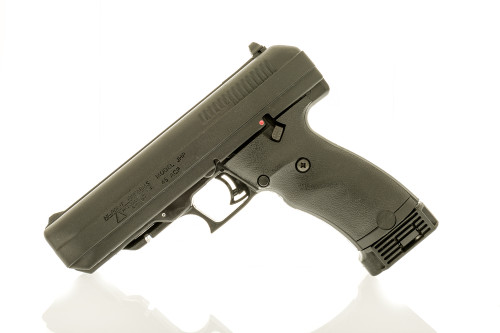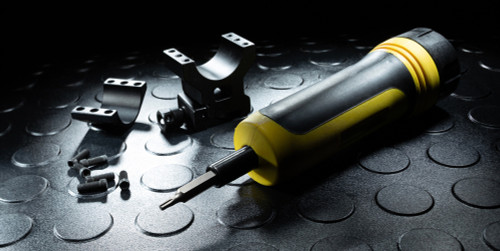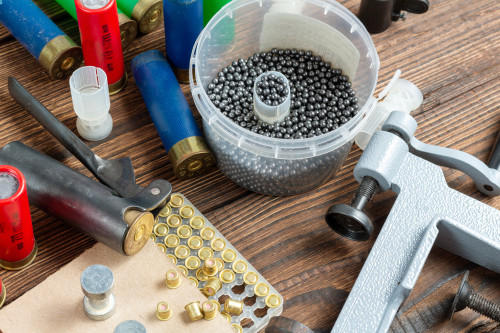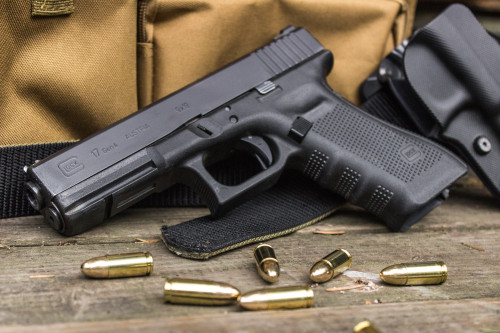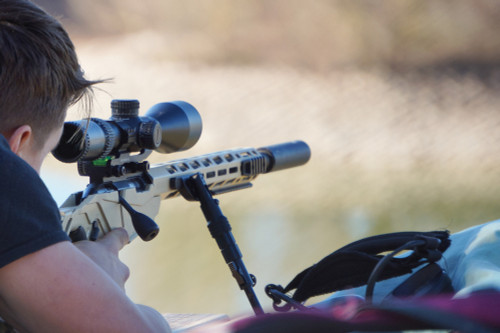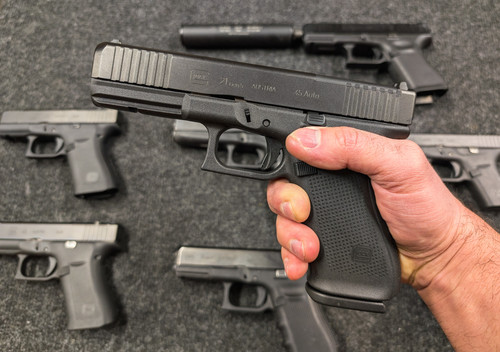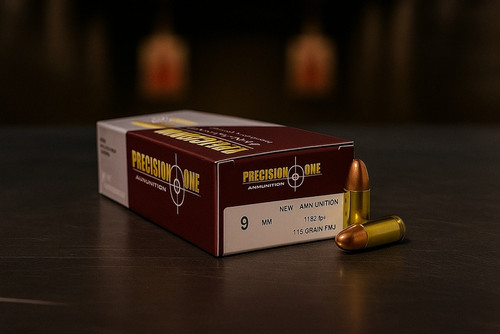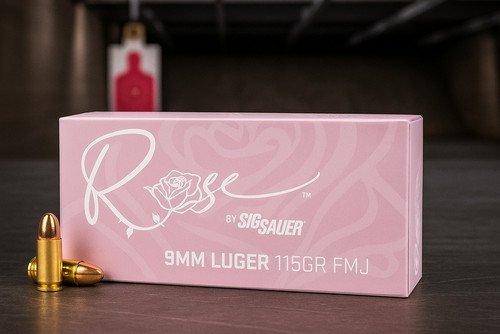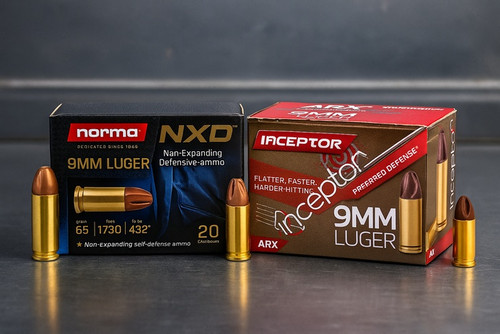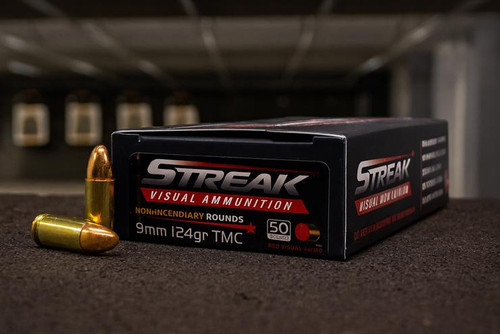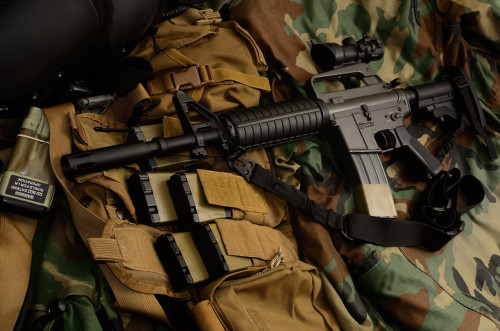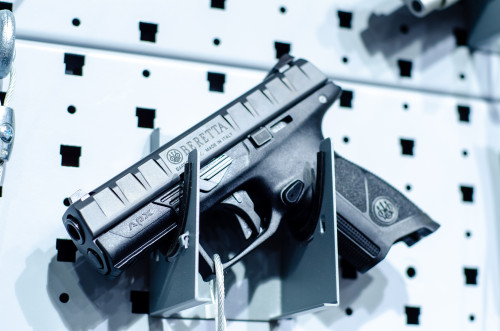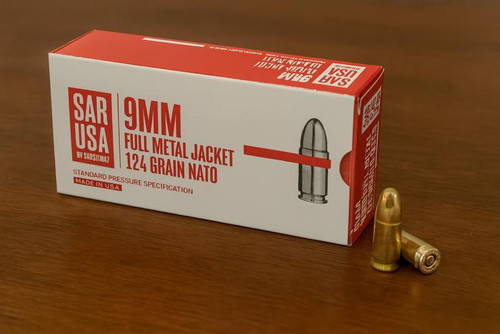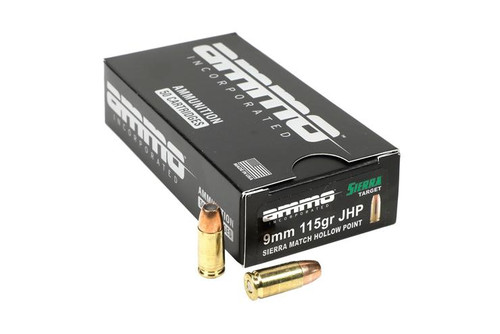Comfortable training rounds built by experts, designed to run reliably.
If you’re on the hunt for quality 9mm ammunition for training, competition, or high‑volume practice—and you care about feel, reliability, and performance—then the SIG Sauer ROSE line should be on your radar. It isn’t necessarily the flashiest hollow‑point carry load, but it’s designed with an emphasis on shooters who train hard and want a round they can trust. Let’s walk through what the ROSE series brings to the table, how it performs, where it excels, and how it fits your ammo‑rotation.
What Is the SIG Sauer ROSE 9mm Line?
The ROSE series (which stands for Reduced Optimized Shooting Experience) was developed by SIG Sauer in collaboration with competitive shooters, including Lena Miculek and Max Michel, with the goal of producing a training-oriented 9mm round that offers softer recoil, reliable performance, and excellent feeding in a wide range of pistols.
In addition to the FMJ training variant, the ROSE line is also available in a Jacketed Hollow Point (JHP) configuration. This defensive load is designed to mirror the same recoil characteristics and point of impact as the training ammo, giving shooters the benefit of consistent feel between practice and carry ammunition. The JHP version provides controlled expansion and penetration, making it suitable for personal defense—especially for those who want to keep their carry ammo within the same performance family as their training loads.
In short: the ROSE line is both training- and defense-oriented, offering shooters the ability to train how they carry with FMJ and JHP options engineered to perform with similar handling. It’s especially useful if you shoot a compact or carry pistol and want less recoil and more control without giving up defensive capability.
Specifications at a Glance
Here are the typical specifications for one widely listed variant of ROSE 9mm:
| Ammunition Specifications | |
|---|---|
| Caliber | 9mm Luger (9×19mm) |
| Bullet Weight | 115 grains (common training FMJ version) |
| Bullet Type | FMJ (Full Metal Jacket) — training version |
| Case Material | Brass, boxer-primed — reloadable in many cases |
| Muzzle Velocity | ≈1,050 fps (from short barrel, e.g., 3.1″ — published test figure; actual will vary by firearm) |
| Muzzle Energy | ≈282 ft·lbs (from the referenced short-barrel test) |
| Use Case | Training, competition, high-volume practice; compatible with compact/short-barrel pistols |
These numbers position the ROSE line clearly in the training/volume‑shooting category. Though FMJ, the rounds are built to higher standards than budget bulk loads.
Real‑World Performance
Accuracy
In practical use, many shooters report that the ROSE 9mm FMJ rounds achieve solid accuracy for training: reliable function, consistent impact points, and predictable behavior across multiple rounds. Given the design focus on compact pistols, they perform well in smaller frames with shorter barrels. One spec sheet mentions performance from a 3.1″ barrel.
While not marketed as a match‑grade load, the consistency and manufacturing quality make it more reliable than many generic FMJ training brands.
Reliability & Feeding
SIG Sauer states that the ROSE line was engineered to have “no difference in shootability, impact points or cycling performance” between ball and hollow‑point loads in the series. In other words: they aimed for consistent feeding and extraction across their product line.
In real use, shooters report very few issues in full‑size, compact, or even sub‑compact pistols, so long as the firearm is properly maintained and compatible. That makes ROSE a very good “train what you carry if your carry is 9mm” option.
Recoil & Feel
One of the standout features is the softer recoil impulse compared to many higher‑velocity or heavier bullet loads. Because ROSE is engineered with training in mind, less felt recoil means better follow‑up shot capability and less fatigue in long sessions. This is particularly beneficial for shooters training often, or using lighter/compact pistols.
Cleanliness & Maintenance
Given that ROSE uses brass cases and quality primers, cleaning and maintenance are generally straightforward. The shooter feedback suggests it runs relatively clean compared to budget steel‑cased ammo, though like all FMJ training rounds you should still be attentive to maintenance after high round counts.
Shooter Feedback
“I ran a few hundred rounds of the ROSE 115‑grain FMJ in my compact carry gun. It cycled flawlessly, felt surprisingly soft on recoil, and I had zero feeding issues.”
“For my competition drills I switched to ROSE for a while. It gave the performance I needed without the heavy snap I get with carry JHPs.”
“Love the brass case and consistency. It’s more expensive than bulk budget, but the build‑quality shows and it’s worth it for serious training.”
Disclaimer: The above comments come from shooter observations and user forum posts (archetypal). Your results may differ depending on firearm platform, barrel length, ammo lot, magazine condition, cleaning schedule, and environmental factors. Always test any new ammo in your own firearm before relying on it for high‑volume use or carry training.
Pros & Cons
What Works Well
- High‑quality manufacturing from SIG Sauer, offering better consistency than many generic training loads.
- Brass‑cased, reloadable design, and reliable function in a wide range of 9mm pistols.
- Softer recoil and training‑focused feel, making it easier to train and shoot volumes without fatigue.
- Designed with compact/short‑barrel pistols in mind—nice benefit if you carry or train with a smaller gun.
What to Be Aware Of
- Because it’s FMJ (in the common variant), it is not designed or marketed for defense/expansion purposes—so do not assume it will perform like a defensive JHP load.
- Price per round is higher than low‑cost bulk steel‑cased ammo, so it may cost more for high volume training.
- While compatibility is very good, always test in your gun—especially if using a sub‑compact or unique custom setup.
- If you’re specifically seeking max expansion or defensive terminal performance, you’ll need a dedicated hollow‑point load rather than the FMJ training variant.
Final Thoughts: Is ROSE Right for You?
If you’re a shooter who trains regularly, carries a 9mm pistol (especially compact), or simply wants high‑quality training ammo that you can trust, the SIG Sauer ROSE 9mm is a very compelling option. With brass‑cased construction, engineered consistency, and softer recoil feel, it stands out from many “budget” training options.
Here’s how I’d frame it:
- For training and high‑volume use: Very good buy.
- For carry preparation/training with your carry gun: Excellent match if your carry is 9mm and you want to mirror recoil/feel.
- For actual defensive use: Use a purpose‑built JHP defensive load—ROSE FMJ is not that. But ROSE serves as the ideal companion training load.
In conclusion, ROSE gives you quality training ammo that performs more like a premium product than a generic bulk round.
For readers looking to compare the SIG SAUER Rose 115gr to a proven FMJ option, our complete review of Federal 9mm FMJ is the perfect follow-up read.
FAQ
What bullet weight does ROSE 9mm use?
The commonly listed variant uses 115 grains (FMJ) for training and competition‑oriented use.
Is ROSE ammo brass‑cased or steel‑cased?
Brass‑cased, boxer‑primed—suitable for more reliable feeding and potentially reloadable.
Is ROSE designed for self‑defense or training?
ROSE is designed primarily for training and competition. While a JHP version is available, the FMJ version is not intended as a defensive expansion load.
Will it run in compact or short‑barrel pistols?
Yes—it is optimized for such platforms, with softer recoil and compatibility in smaller guns.
Is it clean‑shooting?
Relatively speaking yes—better than many budget steel‑cased brands—but you should still maintain your firearm after heavy use like any 9mm FMJ.
Should I use ROSE for everyday training?
Absolutely yes—if you want reliable ammo that doesn’t beat you up during long sessions. It’s a smart choice for that.
Do I need to adjust my point of impact when switching to ROSE training ammo?
Likely not much if you use it in your same pistol and barrel length, but always verify point of impact in your platform before making it your sole training load.



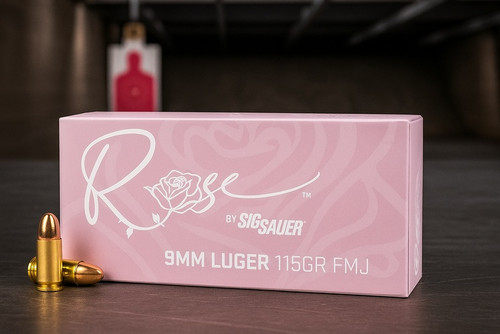
 Pro Armory Editorial Team
Pro Armory Editorial Team